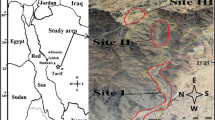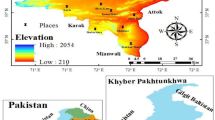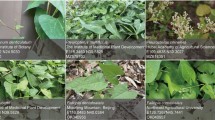Abstract
Psilotum triquetrum, Swartz (Psilotum nudum (L.) Beauv.) has been listed recently around Port St. John's, Cape Province (Jacot-Guillarmod, A. personal communication, 1961) and in Natal, where it occurs locally on the coast, in bush swamp and, rarely, on mud flats1. Engler and others noted this plant in the Rain Forest, Victoria Falls, and I have seen it in Ghana, in the Aburi Botanic Garden, growing on a tree stump (1958). In a general discussion with the Rev. J. Gomes, O.P., mention was made that a plant like Psilotum had been seen in the Roma Valley, Basutoland. Dr. F. Zëylmaker, previously of this Department, had made an entry in the Herbarium (1959) of a specimen of Psilotum triquetrum without making a clear record of the locality. Consequently, during an endeavour to ‘rediscover’ this plant, the Cave Sandstone on the eastern escarpment of the Roma Valley was explored and a single colony of eighteen fronds of Psilotum triquetrum noted. The plant was found growing in a cleft in the rock-face in running water. The water was richly mineralized, leaving a coralline encrustation on the surface of the more mature fronds of the colony. The plant showed all the usual features of angularity of the stems, distinct flattening in the initial dichotomy of the frond and erect growth form. Most accounts of this genus state that it is distinctly tropical and almost certainly epiphytic. Manton2 comments on its establishment in certain botanic gardens and greenhouses in non-tropical areas. The climate of Basutoland is certainly not tropical, hence the observation of Psilotum growing here, particularly in a well-established non-epiphytic habitat, is worthy of record.
This is a preview of subscription content, access via your institution
Access options
Subscribe to this journal
Receive 51 print issues and online access
$199.00 per year
only $3.90 per issue
Buy this article
- Purchase on SpringerLink
- Instant access to full article PDF
Prices may be subject to local taxes which are calculated during checkout
Similar content being viewed by others
References
Sim, T. R., Ferns of South Africa, second ed. (Cambridge, 1915).
Manton, I., Problems of Cytology and Evolution in the Pteridophyta (Cambridge, 1950).
Author information
Authors and Affiliations
Rights and permissions
About this article
Cite this article
MORGAN, D. Psilotum triquetrum, Swartz in Basutoland. Nature 195, 1121 (1962). https://doi.org/10.1038/1951121a0
Issue date:
DOI: https://doi.org/10.1038/1951121a0



